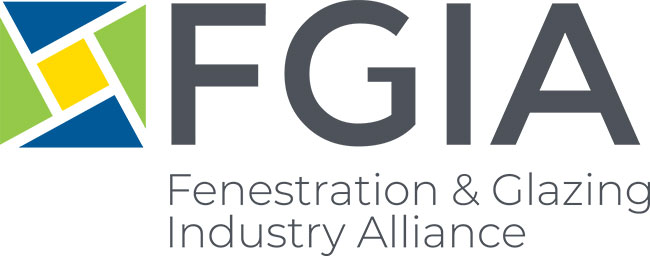
Articles
Association News
Community
FGIA: Paving the road to net-zero
March 2, 2022 By Amy Roberts FGIA director of Canadian and technical glass operations
 (The Fenestration and Glazing Industry Alliance)
(The Fenestration and Glazing Industry Alliance) Most efforts to address climate change have much in common with traditional initiatives for natural resource conservation and environmental cleanliness. Governmental entities around the world have signed on to objectives such as the International Energy Agency’s global goal of net zero emissions by 2050. In B.C., a large part of the effort is the CleanBC Roadmap to 2030 program, launched in 2018. CleanBC commits the province to ambitious greenhouse gas reduction goals, including the commitment to reduce emissions by 40 per cent by 2030 and reach “net-zero” emissions by 2050. The province’s abundant supply of clean, affordable hydroelectricity helps enable specific goals, such as phasing out gas furnaces in favour of heat pumps as part of these 2030 strategies. Improving the performance of buildings has been identified as an important pathway to this goal.
As a subset of the program within the buildings pathway, the CleanBC Building Innovation Fund provides development incentives to B.C. manufacturers and technology developers to commercialize and demonstrate new energy-efficient and low-carbon building technologies, designs, construction practices, systems, materials and products. The five streams of funding available are material, component and system manufacturing; digital technology solutions; demonstration projects that involve the construction or renovation of a discrete building and the demonstration of innovative technologies or materials within that building; an open call for innovations; and information sharing and market transformation.
Each of these sectors offers funding grants of $500,000 to $1 million per project (except for the last one, which offers up to $500,000 per project). To be eligible for funding, a project must be located in B.C. and should be energy-efficient; reduce carbon emissions from building operations; and/or have low embodied carbon.
Since its initiation, there have been three rounds of CBBIF funding. The third annual intake of applications to allocate $5 million for project funding for fiscal year 2021/22 opened Nov.17 and closed on Jan. 10. Eligible applicants include builders, developers and manufacturers registered in B.C. and not-for-profit organizations that have offices and/or are active within the province, such as industry associations, universities and technical societies.
Fenestration-related projects eligible for CBBIF funding can include investments in manufacturing facilities to expand or retool product lines, which can involve investments in affiliated software, such as smart glass controls. Such projects would go through the material, component and system manufacturing funding stream of the CBBIF program. Example individual projects could include development of fenestration products with highly insulated commercial framing; thin-triples insulating glass units; low-embodied carbon window frames; vacuum insulated glass; or electrochromic smart glass.
Eligible manufacturers and organizations might consider planning now to participate in the 2022/23 fiscal year installment of the CBBIF grants program. Applicants must complete and submit a completed CBBIF application form, along with a budget template and supporting documentation before the next identified deadline, likely to be announced next fall. The application should emphasize the market transformation aspects of the proposal. Indicating how a proposed project would support multiple manufacturers and a significant portion of B.C.’s market would also be a strong point. To learn more about the eligibility requirements, and other program details, visit CleanBC Building Innovation Fund at gov.bc.ca.
Print this page